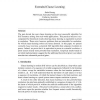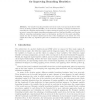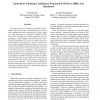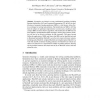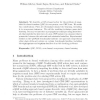29 search results - page 2 / 6 » Extending SAT Solvers to Cryptographic Problems |
AI
2010
Springer
13 years 5 months ago
2010
Springer
The past decade has seen clause learning as the most successful algorithm for SAT instances arising from real-world applications. This practical success is accompanied by theoreti...
SAT
2004
Springer
13 years 10 months ago
2004
Springer
The variable branching heuristics used in the most recent and most effective SAT solvers, including zChaff and BerkMin, can be viewed as consisting of a simple mechanism for rewa...
ICCD
2000
IEEE
13 years 9 months ago
2000
IEEE
This paper presents a verification technique for functional comparison of large combinational circuits using a novel combination of known approaches. The idea is based on a tight...
CORR
2008
Springer
13 years 5 months ago
2008
Springer
Symmetries are intrinsic to many combinatorial problems including Boolean Satisfiability (SAT) and Constraint Programming (CP). In SAT, the identification of symmetry breaking pred...
SAT
2010
Springer
13 years 8 months ago
2010
Springer
Abstract. We describe a DPLL-based solver for the problem of quantified boolean formulas (QBF) in non-prenex, non-CNF form. We make two contributions. First, we reformulate clause...
